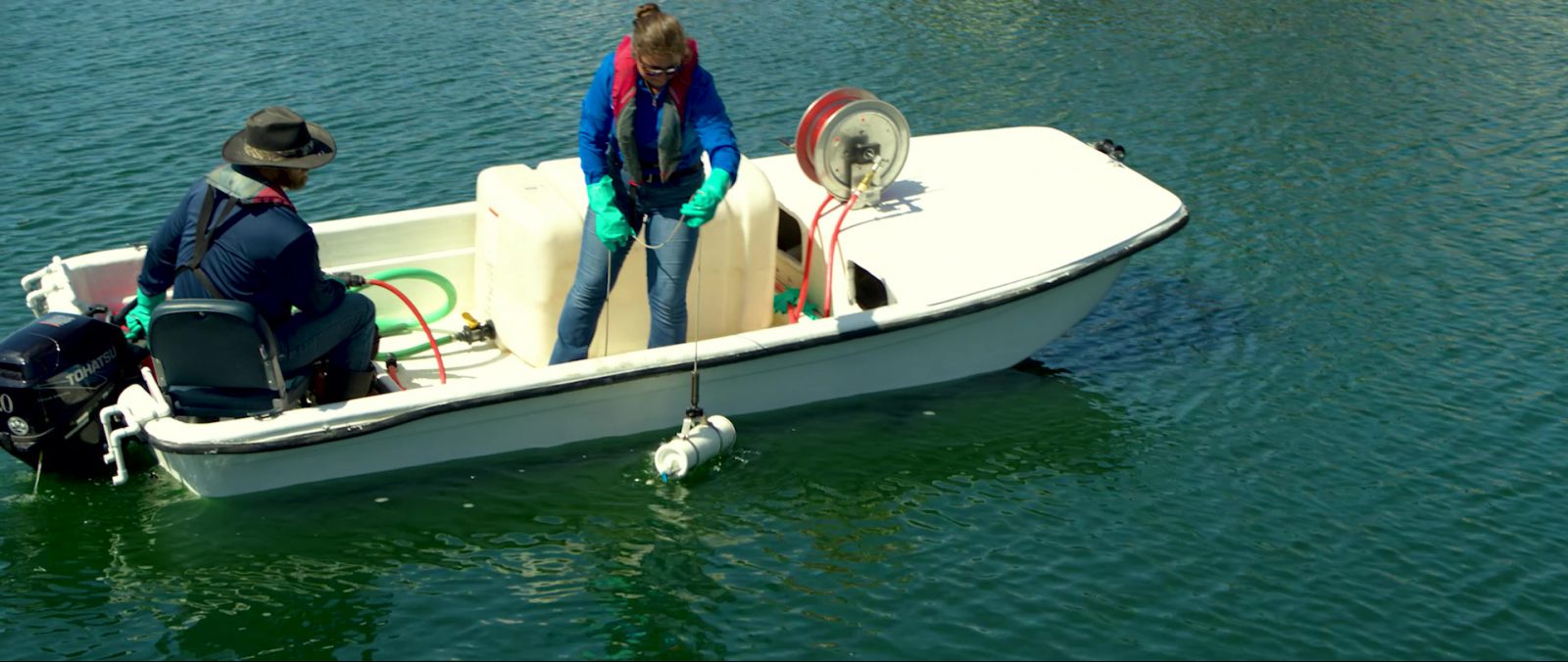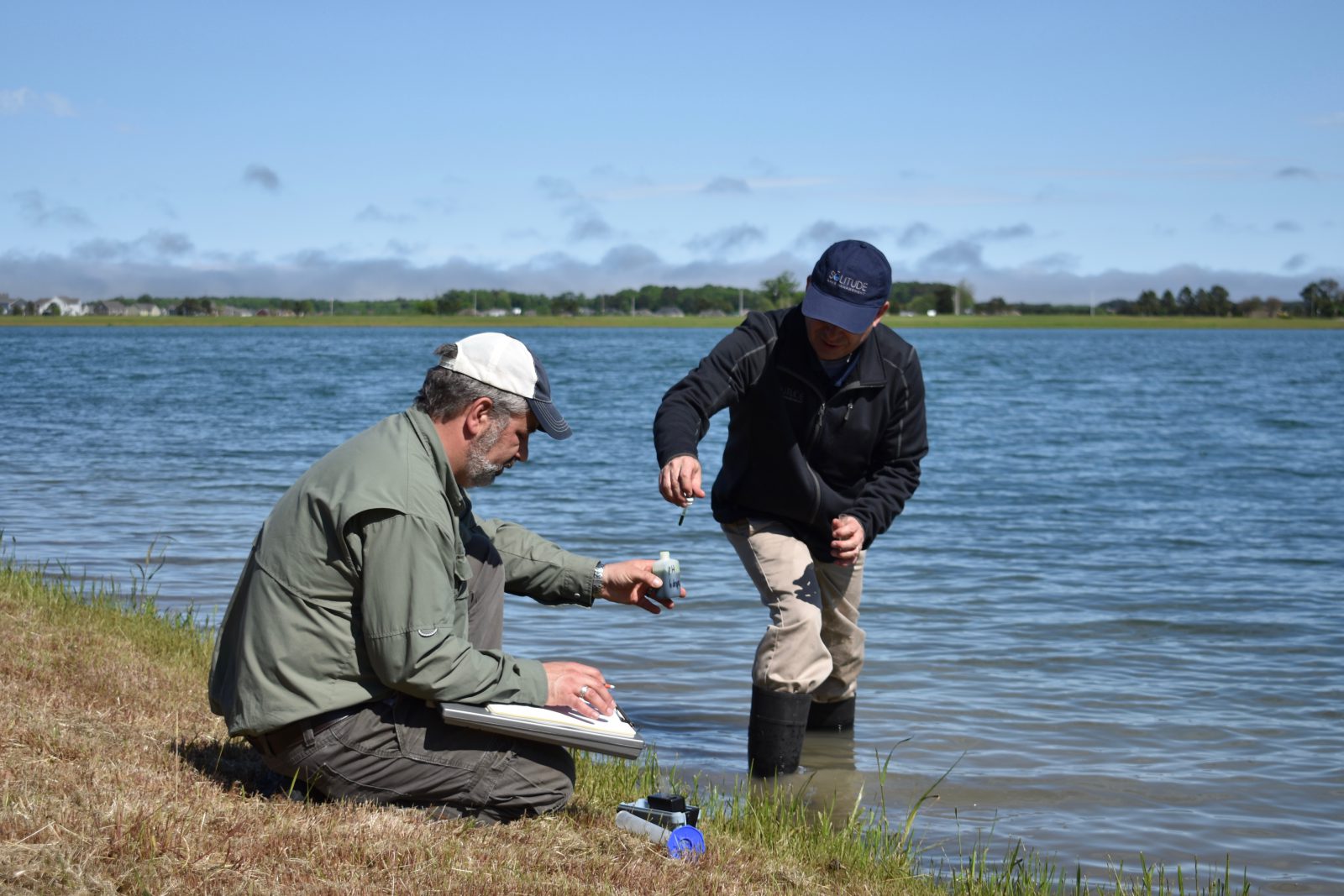
Water Quality Testing: A Balancing Act
Most people have heard the adage that no two snowflakes are the same, but did you know this truth also applies to bodies of water? No two lakes or ponds are the same—and location, size, water use, aquatic vegetation coverage and type, pond nutrient levels, and water depth are all factors that can combine in unique ways to influence the health of a community waterbody. Oftentimes, odor and watercolor can reveal a lot; however, the unique characteristics of a lake or pond are not always this simple to observe.
A professional lake manager tests water quality to determine the unique attributes that make up a waterbody and uses the data to create a totally customized lake or pond management plan. Many different and important parameters can be tested, but the basic values are pH, alkalinity, conductivity, dissolved oxygen, water temperature, and nutrient levels.

Water pH
Water pH is a numeric scale that indicates how acidic or basic a waterbody is. This scale ranges from 0 to 14, with 7 being neutral. If a lake or pond’s pH fluctuates too high or low on the scale, it may lead to nuisance vegetation or algae growth and unhealthy fish, resulting in costly and time-consuming expenditures to bring balance back to the ecosystem. Throughout the day, many factors can cause water pH to fluctuate, such as natural photosynthesis and respiration from both plants and algae. pH can vary during different weather events and seasons as well. Regular water-quality testing can help aquatic resource-management professionals determine if a waterbody has a balanced pH, identify trends that affect water acidity over time, and define an effective solution. Many lakes and ponds greatly benefit from seasonal lime applications, which help maintain the chemical balance of the waterbody.
Alkalinity
Alkalinity is the capability of a waterbody to neutralize or buffer acidic conditions. As with pH, a number of factors can affect water alkalinity, although these levels don’t swing as greatly. However, alkalinity can vary greatly from pond to pond, and significantly, based on geography. Knowledge of alkalinity is extremely important for lake- and pond-management professionals because it can help accurately determine treatment levels when using certain types of pesticides. For parks and recreation associations, it’s often critical to achieve effective results as quickly as possible, without negatively affecting lawns and ornamental vegetation.
Conductivity
Conductivity refers to the water’s ability to carry an electrical current. The results of a conductivity test can reveal the concentration of electrolytes (dissolved salts) present. Each waterbody has a baseline conductivity depending on its geology and soil type. Like alkalinity, water conductivity tends to remain stable over time, so immense changes may mean that the waterbody has been polluted by stormwater runoff or sewage. These indicators may help determine if a lake or pond is suitable for irrigation and recreation, and offer direction for the most appropriate management strategies for the waterbody.
Dissolved Oxygen (DO)
Dissolved oxygen (DO) within a waterbody is vital for the health of native aquatic plants, beneficial organisms, and fish. Likewise, poor DO levels can lead to the growth of nuisance plant species, like watermeal and duckweed. Dissolved oxygen is typically lowest in the morning after periods of darkness. Before daybreak, pond algae and plants expel carbon dioxide and use oxygen. Then morning sunlight can start the photosynthesis process for the day. Because DO levels rely heavily on the weather and seasons, they can vary greatly or quickly drop to unhealthy levels without proactive management. For example, if DO is already low, a string of cloudy days can cause large-scale fish kills.
Temperature
Water temperatures change depending on the season and regional weather patterns, and these can reveal a lot about an aquatic ecosystem and its ability to sustain life. In lakes and ponds used for fishing, temperature is an incredibly important parameter that dictates fish-stocking times and productivity—and can help predict when a fish kill is most likely to occur. Many types of bacteria, plants, and algae thrive in this climate, making summer the easiest time of year to also determine contamination levels in a waterbody. Because they are so intricately linked, professional analysis of temperature often goes hand in hand with DO; as a general rule of thumb—the more water temperatures rise, the more DO is depleted.
Nutrient Testing
Water-quality testing can reveal if a waterbody is suffering from an influx of excess nutrients. High levels of phosphorous and nitrogen, which often enter irrigation ponds through stormwater runoff, are the largest contributing factors to algae growth. Fortunately, there are nutrient remediation and flocculant products that can decrease the number of free reactive nutrients available to fuel nuisance plant and algae development. If water-quality tests determine a waterbody is nutrient-heavy or eutrophic, then professional nutrient remediation is recommended. Soil tests may also reveal that there is excess phosphorus present. If so, only fertilizers that are free of phosphorous should be used during grow periods. A professional lake manager can offer a number of personalized treatment options based on the unique characteristics of a waterbody.
Altogether, these water-quality parameters can be used to establish a baseline of health for a lake or pond and indicate areas that may require some attention. If nutrient levels are deemed too high, a lake manager may recommend applying Phoslock, Alum or Biochar to capture and bind excess nutrients and prevent them from fueling nuisance aquatic weeds or harmful algal blooms. If DO levels are too low to sustain healthy fish populations, it’s worth considering the introduction of a floating fountain or submersed aeration system to help create regular circulation and maintain consistent temperatures throughout the waterbody. Just as no two waterbodies are alike, neither are any two management strategies. No matter the water-quality improvement areas identified, a custom approach can help pave the way for a healthy, balanced, and beautiful environment.
SOLitude Lake Management is a nationwide environmental firm committed to providing sustainable solutions that improve water quality, enhance beauty, preserve natural resources and reduce our environmental footprint. SOLitude’s team of aquatic resource management professionals specializes in the development and execution of customized lake, stormwater pond, wetland and fisheries management programs that include water quality testing and restoration, nutrient remediation, algae and aquatic weed control, installation and maintenance of fountains and aeration systems, bathymetry, shoreline erosion restoration, mechanical harvesting and hydro-raking, lake vegetation studies, biological assessments, habitat evaluations, and invasive species management. Services and educational resources are available to clients nationwide, including homeowners associations, multi-family and apartment communities, golf courses, commercial developments, ranches, private landowners, reservoirs, recreational and public lakes, municipalities, drinking water authorities, parks, and state and federal agencies. SOLitude Lake Management is a proud member of the Rentokil family of companies in North America.









